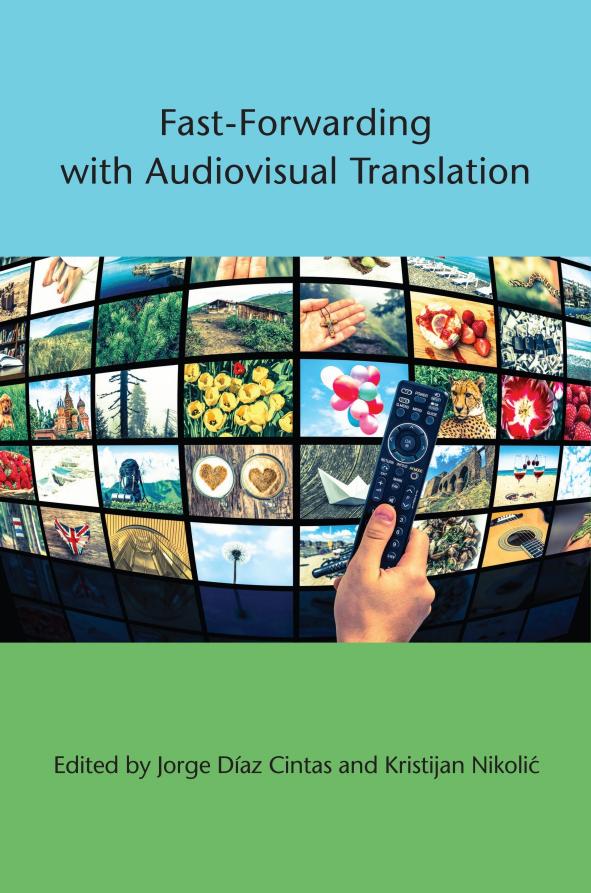Fast-Forwarding with Audiovisual Translation by Jorge Díaz Cintas Kristijan Nikolić

Author:Jorge Díaz Cintas,Kristijan Nikolić
Language: eng
Format: epub, pdf
Publisher: National Book Network International
Published: 2014-10-20T16:00:00+00:00
7Eye Tracking and the Process of Dubbing Translation
Kristian Tangsgaard Hvelplund
Introduction
Dubbing translation is quite different from most other types of translation as it involves not only the processing of written text but also the processing of information from other semiotic channels. In addition to dealing with the source text (ST) and target text (TT) manuscripts, translators need to coordinate and organise information from acoustic as well as visual channels during the translation process. The translator must be alert to the dual function of the TT: the finalised TT manuscript should serve as a useful point of departure for dubbing actors to record the translated dialogue in the target language (TL), and the dubbed dialogue, subject to the interpretation of the dubbing actors and director, should convey the original language message to the new TT audience. The translator thus needs to take into account a variety of issues such as register, style, terminological accuracy, synchronicity and so on. While the complex nature of dubbing is fascinating from a cognitive perspective, the cognitive processes that underlie this type of translation are not yet well understood. Having found its inspiration mainly in the cognitive sciences, research into the processes underlying more traditional types of translating has been going on for decades, and recently eye tracking has been adopted as a central method to tap into the comprehension and production aspects of translation. In audiovisual translation (AVT), eye tracking has been used almost exclusively to explore reception aspects, with the resulting situation that the production dimension has until now been largely ignored and the potential to explore how the mind works with polysemiotic translations remains largely untapped. The benefits of having a better understanding of the cognitive processes of dubbing are similar to those of having a better understanding of the cognitive processes of translation considered more broadly: to be able to model and predict translator behaviour in order to improve and optimise translators’ translation processes. Insights into the cognitive processes of dubbing are of potential interest to pedagogical and didactic initiatives in the training of dubbing translators, and they can add valuable information to the discussion of what characterises and differentiates them from translators who work with other types of translation. More broadly, a better understanding of dubbing translation processes is important in understanding the human mind’s ability to coordinate cognitive effort in tasks, which require shifting focus between multiple semiotic channels.
Process-oriented approaches constitute a very useful methodology to investigate these and other matters concerning dubbing, and this study examines how cognitive effort is allocated and coordinated when translating for dubbing. Using eye tracking technology to find out where novice dubbing translators look at the computer screen during the translation process, the aim is to get an initial impression of the cognitive processes underlying this type of translation. More specifically, the study investigates how translators allocate cognitive resources during the translation process; it discusses the translator’s processing flow and examines the load placed on the translator’s cognitive systems during the translation process. The findings
Download
Fast-Forwarding with Audiovisual Translation by Jorge Díaz Cintas Kristijan Nikolić.pdf
This site does not store any files on its server. We only index and link to content provided by other sites. Please contact the content providers to delete copyright contents if any and email us, we'll remove relevant links or contents immediately.
| Coloring Books for Grown-Ups | Humor |
| Movies | Performing Arts |
| Pop Culture | Puzzles & Games |
| Radio | Sheet Music & Scores |
| Television | Trivia & Fun Facts |
Head of Drama by Sydney Newman(2023)
Robin by Dave Itzkoff(2005)
I'm Judging You by Luvvie Ajayi(1892)
The Paranormal 13 (13 free books featuring witches, vampires, werewolves, mermaids, psychics, Loki, time travel and more!) by unknow(1849)
Single State of Mind by Andi Dorfman(1511)
Ten by Gretchen McNeil(1493)
#MurderTrending by Gretchen McNeil(1395)
Key to the Sacred Pattern: The Untold Story of Rennes-le-Chateau by Henry Lincoln(1351)
Most Talkative by Andy Cohen(1311)
Merv by Merv Griffin(1265)
Notes from the Upside Down by Guy Adams(1180)
This Is Just My Face by Gabourey Sidibe(1179)
Jamie Oliver by Stafford Hildred(1148)
The Hunger Games: Official Illustrated Movie Companion by Egan Kate(1119)
Springfield Confidential by Mike Reiss(1106)
Clarkson--Look Who's Back by Gwen Russell(1078)
The TV Writer's Workbook: A Creative Approach To Television Scripts by Ellen Sandler(1070)
Blue Planet II by James Honeyborne & Mark Brownlow(1021)
Dark Angel by D. A. Stern(1014)
